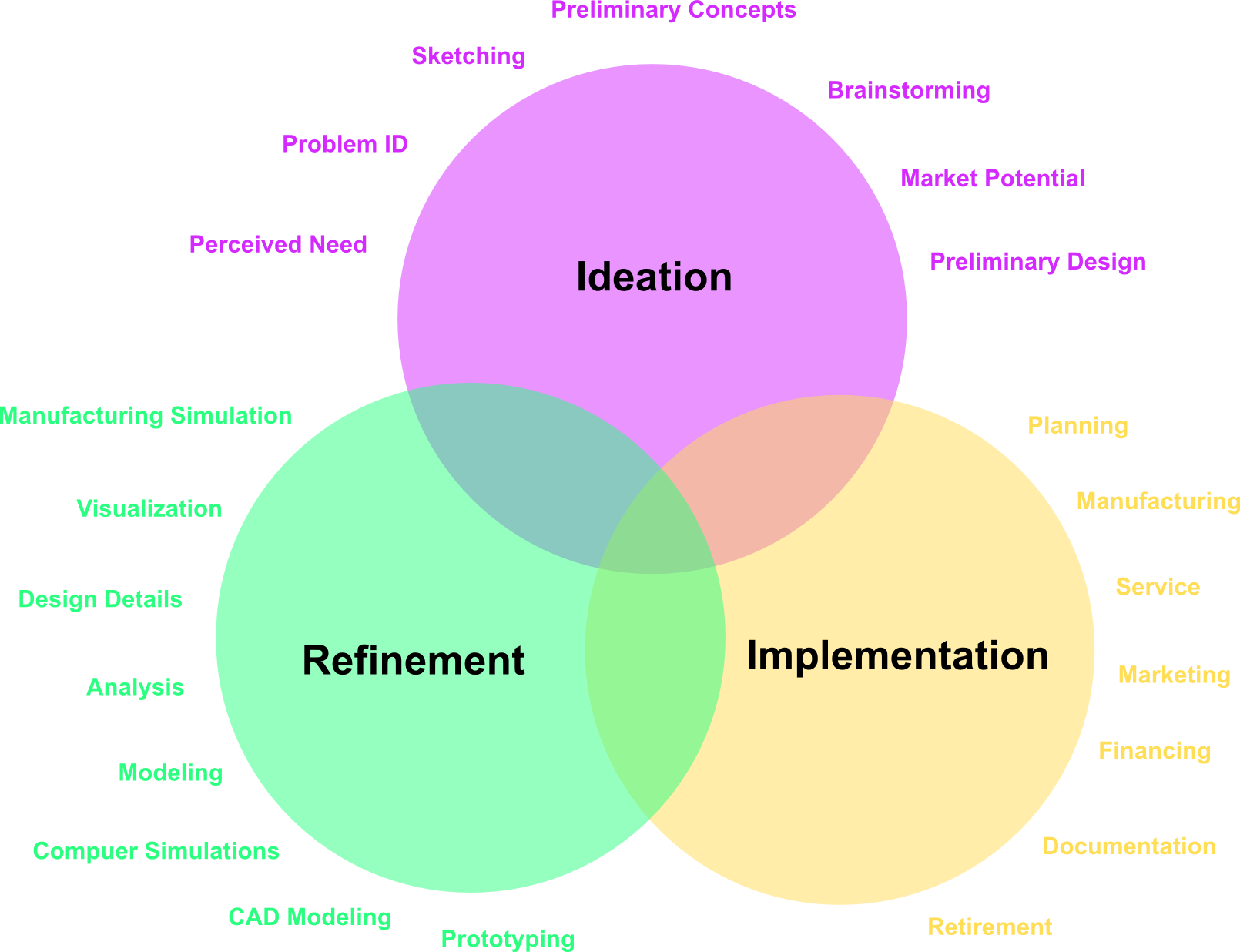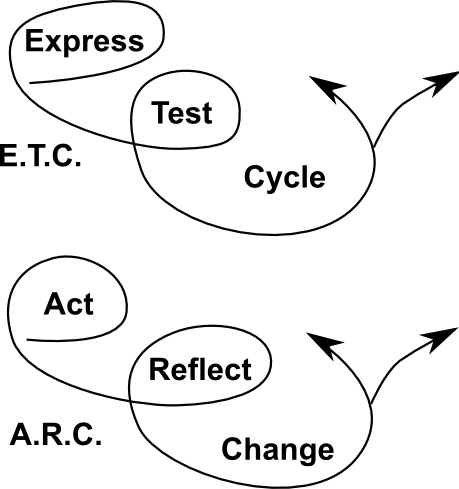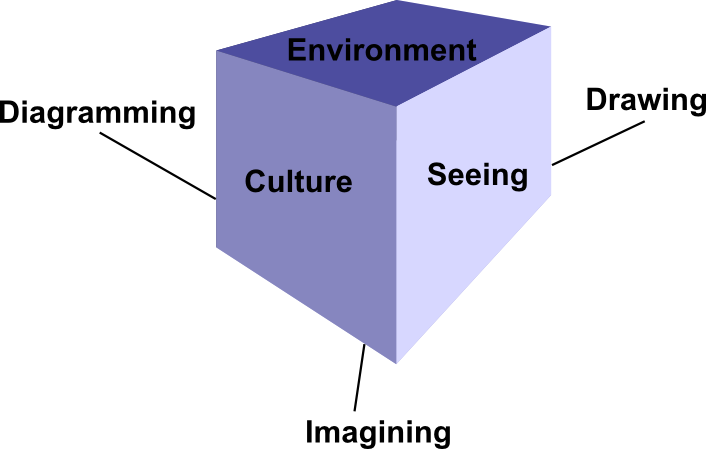ENG 004 Lecture 2, Oct 2, 2012
Announcements
- Studios start Thursday
- Bring Sketchbooks to studio!
- Lecture HW #1 due October 9
- Some wait listed students will be added
- Note taker needed
Topics
Design Models: Concurrent, ETC, ARC, Ram's Principles, Design Thinking
Visual Culture/Thinking: Seeing, Imagining, Drawing/Sketching,
Diagramming, Environment, Culture
Graphics in Design: Visualization, Communication, Documentation
Design Process
Design is not a linear process.
It can and usually involves many iterations
Past models of design had a linear sequence of steps with "feedback" to
previous steps to modify the design based on some constraints or
specifications.
All designs start from:
- Perceived need
- Idea
- Problem
Concurrent Design Processes

Concurrent Design Processes

Express/Act Phase
- Idea or problem expressed and visualized
- Creative proposals to satisfy the need of solve the problem
Test/Reflect Phase
- Discussion with others
- Analysis/Testing to satisfy specs
- Initially feedback is pronounced
- Goal is to improve design
- Identify strengths and weaknesses
- Incorporate ideas from others
Cycle/Change Phase
- Revisit the previous phases if the solutions or strategies fail.
Design Thinking
Combines:
- empathy for context of problem
- creativity in generation of insights and solutions
- rationality to analyze and fit solution to the context
Solution Based Thinking
- Creative method to gain improved future results of problem or
issues
- Different than the scientific method
- Scientific method: question, hypothesis, prediction, test, analyze
- Scientific method starts at the problem (defines the problems
parameters)
- Solution based method starts at the solution
- Designs should look holistically for solutions that fit the
problem.
Thinking
Divergent thinking: ability to offer different and unique
ideas based around on a theme.
Convergent thinking: ability to find "correct" solutions
to the given problem
Dieter Rams's 10 Principles of Good Design
www.vitsoe.com/us/about/good-design
Good design...
- is innovative
- makes a product useful
- is aesthetic
- makes a design product understandable
- is unobtrusive
- is honest
- is long lasting
- is thorough down to the last detail
- is environmentally friendly
- is as little design as possible
Visual Thinking
- Right Side of the Brain: emotional and creative side
- Organizes thoughts intuitively and simultaneously
- no words, no movement, no numbers, no sound

Seeing
.png)
http://en.wikipedia.org/wiki/File:My_Wife_and_My_Mother-In-Law_%28Hill%29.svg
Seeing

http://en.wikipedia.org/wiki/Rubin_vase
←
→
/
#




.png)
